The tc electronic Ditto X4 Looper has clearly been designed by a looping enthusiast that fully understands the needs of the live looping musician. The user interface is so easy to operate, leaving you to focus on playing and easily creating tight loops without being distracted by the technology.
It provides dual loops, plenty looping time (5 minutes), and the two loops can be synchronised to either serially follow each other (eg verse/chorus) or play in parallel to layer over each other. The second loop can be the same length as loop 1, or multiples of loop 1 length.
It features true stereo inputs and outputs, so you can use it with just your guitar as a mono input, or combine your guitar on one input with your bass player on the other input for example, or feed your stereo FX output into the looper retaining your full stereo delay/reverb effects etc on the looper output.
As well as guitar, I use it with my 12 string Grand Chapman Stick, feeding my combined bass and guitar effects into the stereo ins, but can also feed the melody side to one input and bass side to the other for a more ?acoustic? approach, keeping each side of the instrument to a separate output for recording and later EQ or processing. Perfect flexibility for the Chapman Stick player.
One of the key features of this device is that it enables decaying loops, which transforms the fixed looping concept into fading echoe loops that morph continuously into the next overlayered loops, allowing harmonised parts to continuously evolve and change. This gives fantastic creative possibilities. For example, in serial mode you could create a fixed bass or rhythmic progression in loop 1, then go to loop 2 keeping it open in decaying mode to play melodic lines over the top of loop 1 that combine with but gradually fade under the next loop 2 layers as you build evolving harmonised parts. These can be directly synchronised or played in ?Canon?. The decay control lets you easily set the number of fading repeats for each layer.
A great sounding set of loop specific effects can be selected and switched on with a dedicated footswitch. These include a fade out when stopping, a cool stop mode that sounds like a tape machine slowing down to finally stop, loop reverse, half speed, double speed, single loop trigger, and a digital stuttering ?Hold? effect. Again these are so easy to use.
There are four dedicated footswitches for Loop 1, Loop 2, Stop and Loop FX engage/disengage.
The easy interface has been designed to allow flexible operation to suit your preferred way of working, the footswitches can be set to either close the loop on second press or go immediately to over-layering.
Midi synchronisation is provided to allow locking to externally defined tempo, sequencers or loops.
You can save your loops and export them, re-import them or other existing backing loops.
Even if you don?t want to use a looper as a performance tool I still recommend working with one to tighten up your internal timing and listening skills, and as a composing tool.
I Wish I?d had the X4 to add to my loopers when recording my ?Wavedance? CD, decaying loops would have been ideal. The X4 has already quickly inspired lots new material for the next CD.
The sound quality is excellent, totally transparent without any colourisation, and when not looping defaults to true bypass avoiding digitisation or processing.
In summary this is an easy to use and flexible dual looper incorporating variable loop decay, great loop specific effects, external sychronisation, and loops import/export. This is a complete list of features I?ve waited a long time for, and I would highly recommend it.
Simple operation, a great creative tool with decaying loops.
Thomann set the standards by stocking this unit as soon as it was made available in Europe, I was impressed that they actually shipped it to me the day before stock was due, and gave clear shipment notification and communications.
Dave Bowmer ? February 2016
www.davebowmer.com


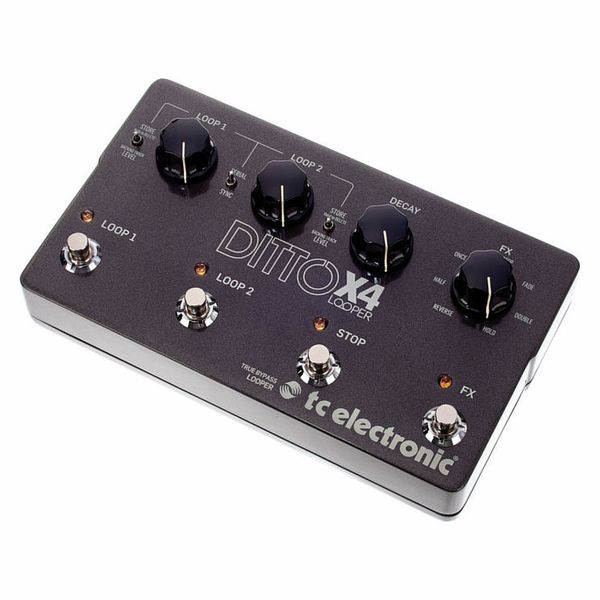
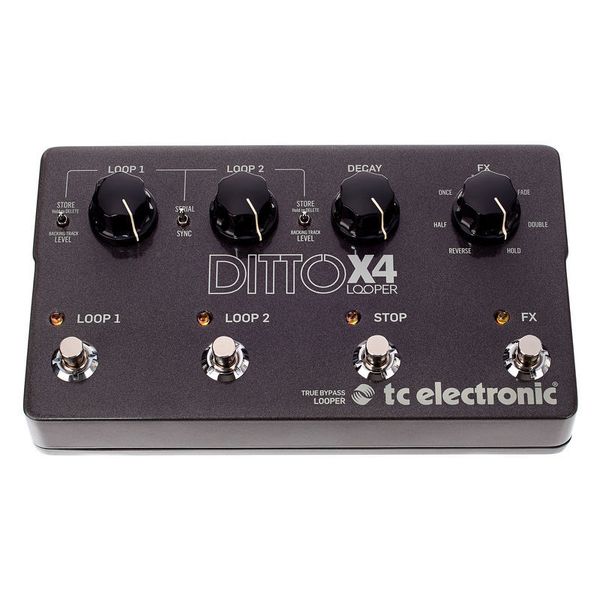
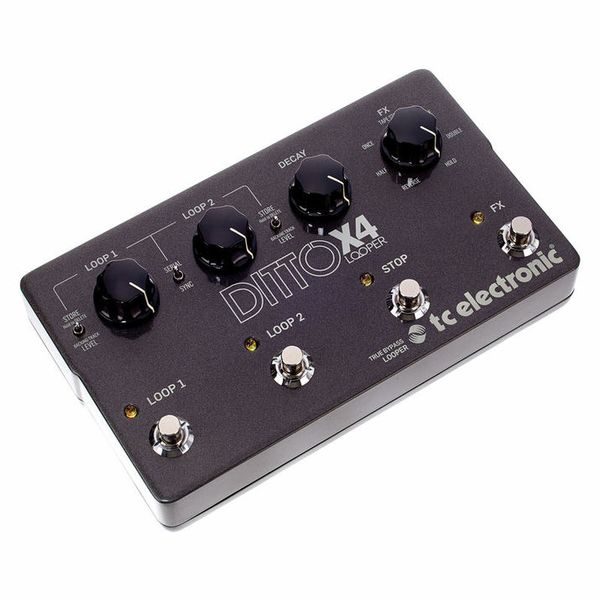
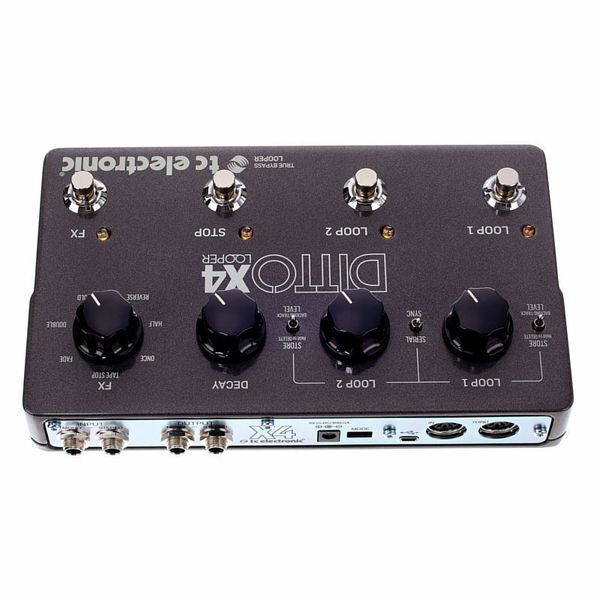
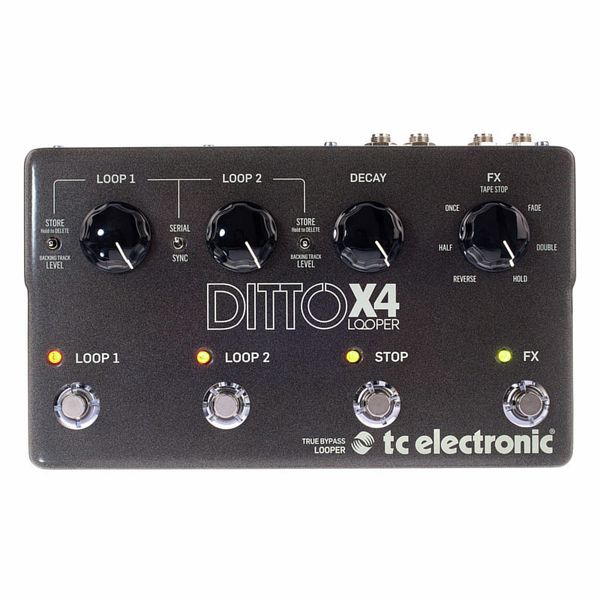

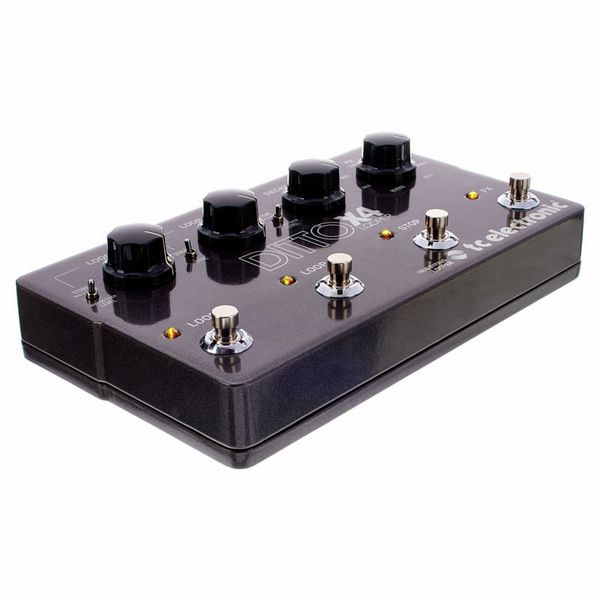
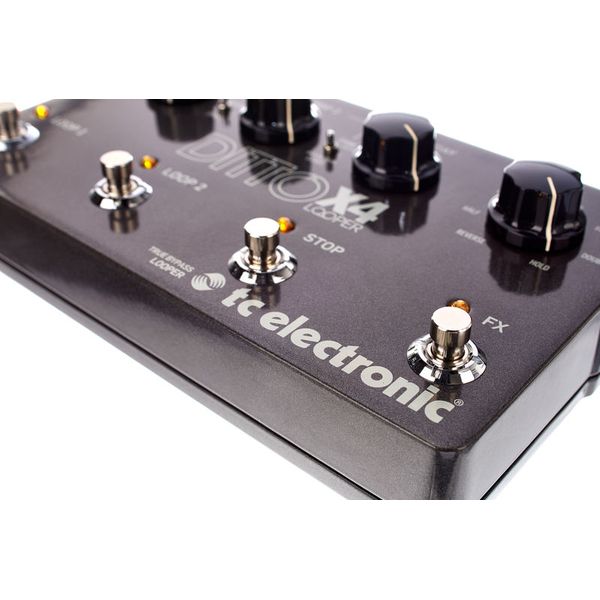
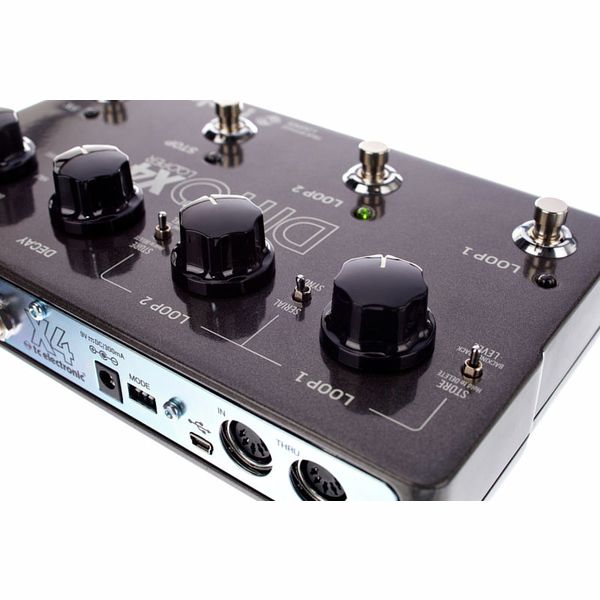
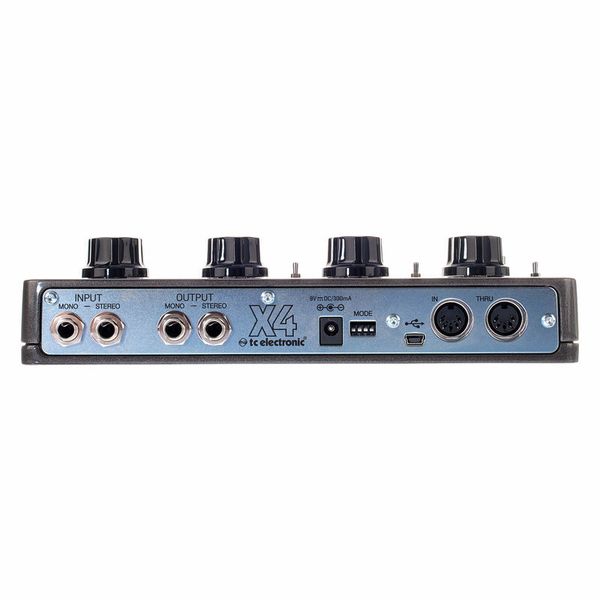
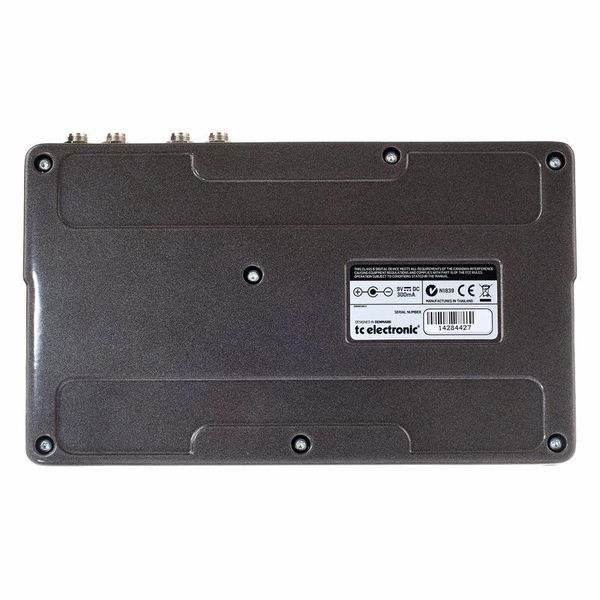
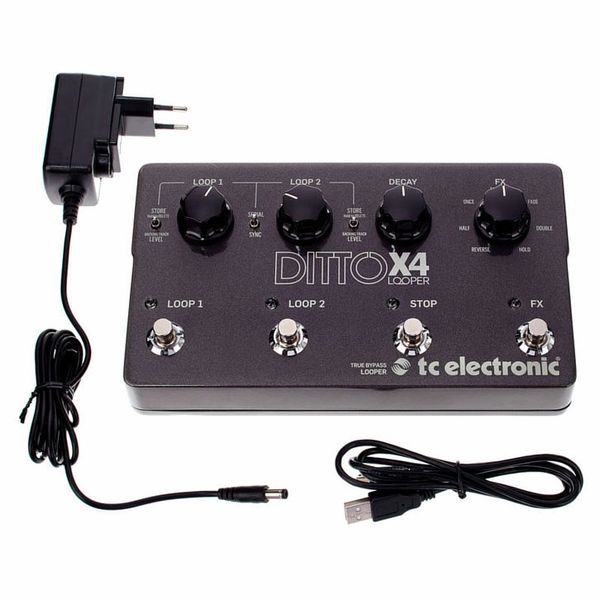













)
)
)
)
